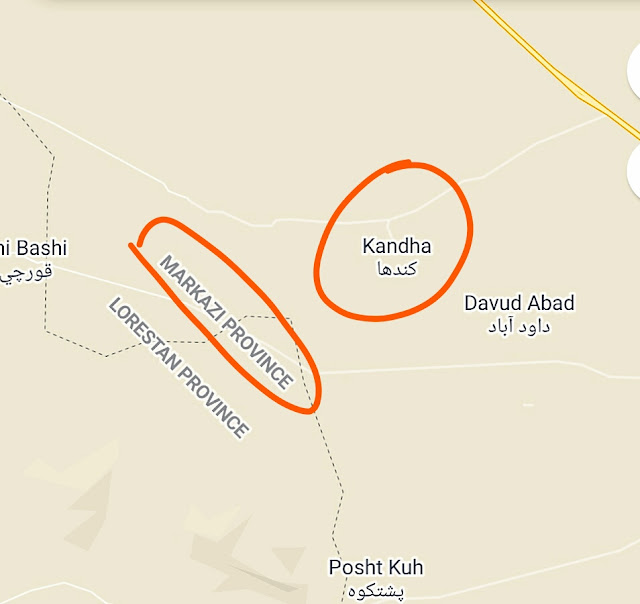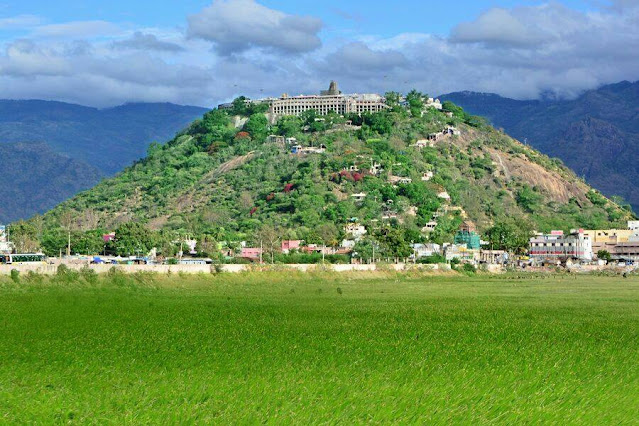Tamizh kings and culture in ancient Iran - Hidden truths !! - Part 2
In continuation from the previous part of this post
Several thousand years before, tamizh people have planted their culture in Iran, during the time of first tamizh sangam at Kumari kandam. Ancient tamizhakam and Kumari Kandam were the cradle of civilization in the world. Tamizh language was spoken by all the people in the Akand Bharat and all other languages such as Prakrit, Hindi, Bengali, Marati, Malayalam, Telugu and kannada were born much later. The ancient tamizh civilisation was ruled by early Pandya kings. They expanded their kingdom in all directions from India, they were the first sea explorers in the world, they had abundant wealth with rich cultural heritage, treasure lands, glittering ornaments, gemstones, minerals, cotton, silk goods, potteries, metal works, highly sophisticated trade centers, markets, huge rich palaces, majestic temples etc. Once, India was the richest country in the world.

Greeks used to purchase piece of gold from dravidian kings. From the south western ports of tamizhakam many precious species, rich herbs, medicinal plants, gold, silk goods and gemstones were exported to Persian countries. Were the ancient tamizh people did only trading with persian countries ???
No !! During the submergence of kumari kandam, ancient tamizh people scattered in groups in different directions. One such group had reached Iran and thus they started a new tamizh civilization in Iran as well. So, they exported special goods to their own land to constitute a new tamizh society over there. The greatness of ancient tamizhakam both inside and outside India were not credited, instead our history books gives much importance to the slavery period of India. School history books contains ample information about British people and Mughals, but failed to praise about knowledge, skills, architecture, science & technology, culture and bravery of our ancestors in India.
But, this blog will expose the hidden and suppressed glory of ancient tamizhakam (entire south india) and Akhand Bharat. The tamizh civilization in ancient Iran have more facts to fall for. I have given some facts in the first part, in continuation from the previous part, this part2 will uncover more details for the same...
3. Parantaka Cholan
Once, Ancient Iran was ruled by King Parantaka Chola of Chola Dynasty and there are some places named after him, which is still in use. Many historical details and records about Parantaka cholan were destroyed both inside and outside tamizhakam, only few are left. Interesting point to be noted here is, the word 'Parantaka' is also the name of Pandya king.
A historical record obtained from the ancient temple at Anbil near Tiruchirappalli, sung by nayanmars, which has fragmented documents dating back to at least 6000 years, informs that Parantaka instituted some services in the temple with one hundred and eight servitors. These servitors worked on ancient jaiminiya recension of samaveda and continuously performed many rituals like vasantayaagam, somayagam, atiratram, agnihotram etc.
Note the word Somayagam, i have mentioned about the same act in my previous post 'Hinduism in Iran',
Somayagam is a sacred rituals like Yagnas, an intoxicating drink will be given called 'Soma' after this ritual. Like wise, in ancient Iran, after performing their sacred worship 'Yasnas', they have a drink called 'Haoma'. Both the rituals and drink are same. So, it is proving that Parantaka Cholan had performed Somayagam in Iran as well and thus this tradition was continued by the later kings.
Prior to Parthian empire, the people of this region seem to have been subjects of the Medes, and 7th century BC Assyrian texts mention a country named Partakka or Partukka .

In the later period of time, this region was inhabited by Parthian kings. Parthia first appears as a political entity in Achaemenid lists of governorates ("satrapies") under their dominion.
This means that Parantaka cholan have also ruled Iran. Eela-kaasu and Eela-karung-kaasu are refers to coinages found in the Chola inscriptions of Parantaka I.
What is the place called Mamuniyeh mentioned in the above picture??
4. Mamuniyeh - is short form of Mamuni Mayan. He is identified as an asura Maya Danava mentioned in ancient tamizh sangam literature. He is the founder of Vastu sastra, father of Mandodari and father -in-law of Asura King Ravana, he is the one who constructed Mayasabha for Pandavas in Mahabharata.
The ancient first tamizh grammar work 'Aintiram' was lost due to submergence of first tamizh sangam at kumari kandam. But Mayan's Aintiram dealing with Vastu sastra has survived and it was published later.
Also there are some more places named in tamizh such as 'Pari. In tamizh, Pari - means Horse, also Pari - refers to a great generous velir king Vel Pari, who ruled ancient tamizhakam. (Have mentioned about king pari in the previous part - part1)

Pari's fame is described in Sangam literature as "முல்லைக்கு தேர் கொடுத்தான் பாரி" (One who gave his chariot to a climber plant). He is one of the Kadai ezhu vallal (literally meaning, the last seven great patrons). There is also a village in Iran named as 'Pariyan', here 'an' is a suffix refers to personal singular used in tamizh language.
Also, there is a province in Iran called 'Markazi Province', scholars say that 'Markazi' means central in Persian. But, for me Markazi is sounding very similar to 'Margazhi', which is one of the important months in the Tamil calendar, which is between Mid December to Mid January in English calendar. It is also an important month for tamizh people, who woke up early in the morning i.e during Brahma muhurta time, takes bath and goes to temple. In the month of margazhi, waking up during the time of brahma muhurta and worshiping gods have many scientific reasons for one's mental and physical health. To know more about brahma muhurta, reach out to the link below,
Thus, we could see a lot of influences of tamizh culture in ancient Iran. The seed of tamizh civilization in Iran was sown by Pandya kings, they were the first ones to expand their culture over there.
5. Lord Kartikeya / Skanda / Murugan
The ancient people in Iran were tamizhs, to be precise they were dravidians. Lord Kartikeya is son of Lord Shiva and Parvati. Iranians worshiped tamizh deity Lord Murugan and named many places in Iran after him. Lord Murugan also called as Kandhan, Kumaran, Skanda etc. There is also a place called Saravan in Gilan province of Iran.
Lord Murugan married his consort Valli, Valli is the second consort of kartikeya and she belongs to a forest group called Kuruvar - a Tamizh tribes of Kurunji region (mountain region). 'Vali', is a village in Khuzestan Province of Iran. Also,
Valian - also known as Velian is a village in Alborz Province, Iran.
But, why did the Iranians worship Kartikeya / Murugan in Iran more specifically ??
According to Sangam literature, Tamizh landscapes are divided into five categories and each landscape is associated with a deity to worship. One such landscape is,
Kurunji Landscape - associated with - Kottravai and Murugan deity. So, hill people in Iran worshiped Murugan and named places after him. There are also many other places in Iran named as per the landscape divisions mentioned in tamizh sangam literature, it is explained and proved in 'Point 8' of 'Part 3' of this post.
Peacock is the vahana of Lord Muruga, also peacock is a popular motif in Persian designs.

One example of a Persian community who worshiped the peacock were the Yazidis, who inhabited in Iraq, Syria, Armenia, Kurdistan, Turkey and Caucasus mountains.
The Yazidis worshiped Melek Taus, a peacock angel, an emanation of God and good. Peacock imagery adorns Yazidi shrines, gateways, graves, and houses of worship. In Iran, Iraq, Turkey,Armenia and Syria there is no peacock, i.e it's not the habituate land for peacocks, so how come peacock is famous over there and why are they worshiping it ?
Actually, Yazidis are hindus who have tamizh roots and worship Lord Murugan, because he is the god for kurunji region (mountain region). Yazidis were from mountain region and Peacocks are originally from Indian subcontinent.
 |
| Yazidi children in their temple shrine |
The above picture found on the wall of hidden temple in Iraq, with yazidi children around.
 |
| Holy Symbol of Yazidi |
The common motif of peacocks of Yazidis and Murugan are symmetrically disposed on both the side of Cosmic tree - a feature taken from Persia which denotes the psychic duality of man drawing its life force from the principle of unity.
For Yazidis, Pazhani temple of Lord Kartikeya in Tamil nadu is the Kula deviam (Family god), so yazidis worship him without fail, though they were forced to forget about their ancestors, religion, culture and history.
'Palani tribe' one of the most powerful kurdish tribe in Iraq. Why they are called as 'Palani' ???
Palani / Pazhani is the holy place of Hindus in Tamil nadu, where a famous temple of Lord Kartikeya / Muruga is situated on the Pazhani hill. This hill and the whole city is called as 'Pazhani', it is pronounced using retroflex tamizh letter 'zh' (like 'zh' in Tamizh).
This place was named after Lord Muruga by the poet Auvaiyar when she praised the god as 'Pazhani appa'. 'Pazham' - means fruit + 'Ne' - means you - together as knowledge fruit, poet Auvaiyar praised lord Murgan as a 'well knowledged person'.
Yazidis use oil lamps for worshiping with peacock on the top. This is similar to the custom followed in tamil nadu, the peacock lamp is called as 'Mayil vilaku' in tamizh.

According to the oral tradition of Yazidis, several thousand years before, the once lived in India and the later migrated to Persia. They also believe in the concept of Karma and rebirth, like Hinduism.
The Yazidi religion has absorbed many elements from Hindusim, within their religious framework they preserved some of the very ancient beliefs that is no longer surviving in any other religion. Yazidi's religion can be traced back to ancient Mesopotamia religion. Thus, it is proving that yazidis were from ancient tamizhakam and they were initially settled in Mesopotamia region before getting scattered to Iran, Iraq, Syria, Armenia, Kurdistan and Turkey. So, tamizh civilization have also started to spread from the ancient Mesopotamia region.
Yazidis were made to forget their history and forced to convert. They are considered as Satan worshipers.
In August 2014, the Yazidis became victims of a genocide by the Islamic State of Iraq and the Levant in its campaign to eradicate non-Islamic influences. This means that they known that they aren't muslims and hunted them down.

The reason that ISIS attacks the Yazidi community in this way is because they view them as pagan and polytheistic because they’re outside of the Abrahamic religions that have a written scripture.
Joanna Palani, brave daughter of Iranian Kurds , who fought for kurds against ISIS, on the front line of Syria in 2016. Doesn't her surname reflect the tribal group 'Palani' ?!!
These points are thus proving the existence of early tamizh civilization in ancient Iran, but the monuments, rich dravidian architectures, knowledge hubs, temples were later demolished after the conquest of Arab rulers. The major facts about tamizh culture in ancient Iran will be exposed in part 3....
--- to be continued in Part 3
- Aarthi Thiyagarajan





No comments:
Post a Comment